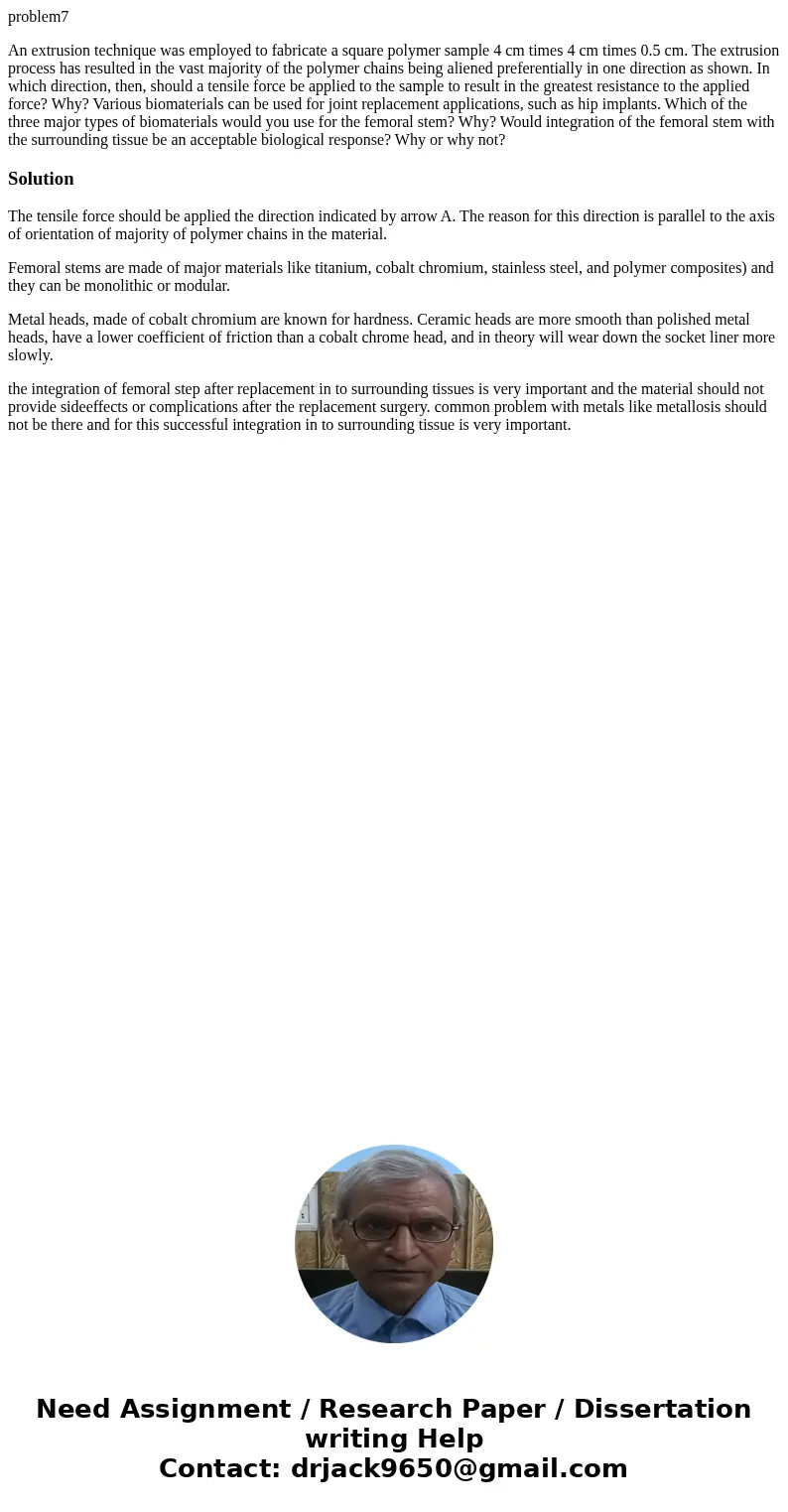problem7 An extrusion technique was employed to fabricate a
problem7
An extrusion technique was employed to fabricate a square polymer sample 4 cm times 4 cm times 0.5 cm. The extrusion process has resulted in the vast majority of the polymer chains being aliened preferentially in one direction as shown. In which direction, then, should a tensile force be applied to the sample to result in the greatest resistance to the applied force? Why? Various biomaterials can be used for joint replacement applications, such as hip implants. Which of the three major types of biomaterials would you use for the femoral stem? Why? Would integration of the femoral stem with the surrounding tissue be an acceptable biological response? Why or why not?Solution
The tensile force should be applied the direction indicated by arrow A. The reason for this direction is parallel to the axis of orientation of majority of polymer chains in the material.
Femoral stems are made of major materials like titanium, cobalt chromium, stainless steel, and polymer composites) and they can be monolithic or modular.
Metal heads, made of cobalt chromium are known for hardness. Ceramic heads are more smooth than polished metal heads, have a lower coefficient of friction than a cobalt chrome head, and in theory will wear down the socket liner more slowly.
the integration of femoral step after replacement in to surrounding tissues is very important and the material should not provide sideeffects or complications after the replacement surgery. common problem with metals like metallosis should not be there and for this successful integration in to surrounding tissue is very important.

 Homework Sourse
Homework Sourse